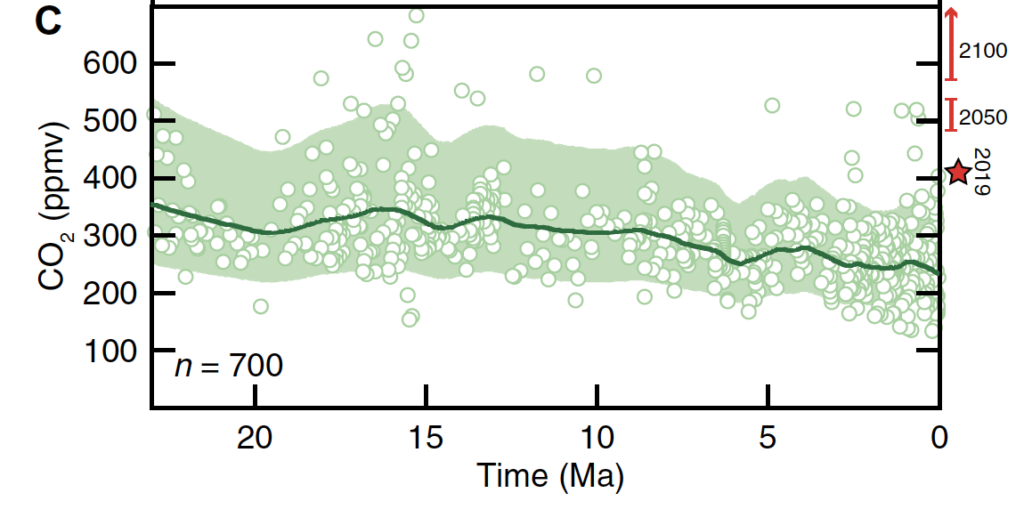Paper: A 23 m.y. record of low atmospheric CO2
Featured image: Modern vascular land plants (Raphanus sativus), growing in a carbon dioxide experiment (Figure 1A from Jahren et al., 2008)
Authors: Ying Cui, Brian A. Schubert, A. Hope Jahren
Carbon dioxide is a greenhouse gas, trapping warmth within the Earth’s atmosphere. Sixty years of measurements on Hawaii’s Mauna Loa summit have shown rising amounts of carbon dioxide in our atmosphere. In addition, the carbon dioxide levels in our modern atmosphere are significantly higher than those we have seen on Earth over the last 800,000 years, according to measurements on bubbles of ancient air trapped in Antarctic ice. When combined with measurements of global temperatures, these direct measurements are irrefutable evidence for rapid modern climate change. However, understanding our current position relative to Earth’s climate farther back in time is trickier, since scientists have to estimate atmospheric composition indirectly (through a “proxy”). A new study tackles this problem with a new method of estimating past carbon dioxide, showing that modern carbon dioxide levels have been unprecedented since at least 7 million years ago.
Cui and co-authors estimate ancient atmospheric carbon dioxide by measuring small variations in the carbon isotope composition of buried remains of vascular plants, plants which contain special tissues that transport water and nutrients. Previous work has already shown that carbon isotopes in these buried plants were especially sensitive to carbon dioxide levels in the air, since the plants prefer to breathe in the lighter isotope of carbon during photosynthesis. The authors were therefore able to set up a mathematical relationship between carbon dioxide in the air and the carbon composition of these ancient organic remnants. From there, they were able to construct a fossil plant-based record of atmospheric carbon dioxide.

Their extensive set of measurements and calculations indicate that atmospheric carbon dioxide levels have remained relatively low (geologically speaking) for the last 23 million years. They also show that today’s atmospheric levels are very likely higher than at any time over the last 7 million years, when considering potential sources of error with their measurements. However, they also show that modern carbon dioxide levels are higher than any median values they estimated for the last 23 million years! These findings emphasize that modern carbon emissions have elevated our atmospheric carbon dioxide to a point that our planet has not experienced since long before our first human ancestors explored their terrain.
The authors note that their new terrestrial estimates for atmospheric carbon dioxide agree well with different estimates over this long time period, such as those that used tiny fossils buried beneath the ocean floor. However, they consider that these plant remains are far more abundant and widespread in the geological record compared to other proxy materials. In fact, ancient plant debris could potentially give an atmospheric carbon dioxide history all the way back to 400 million years (when these plants evolved, over six times as old as the last land dinosaurs!). If scientists can look back this far in time, then they would be able to better understand climate changes on Earth during times when the positions and sizes of our continents looked vastly different from today.
New 23 million year record of atmospheric carbon dioxide highlights current human influence on the atmosphere by Lloyd Anderson is licensed under a Creative Commons Attribution 4.0 International License.

